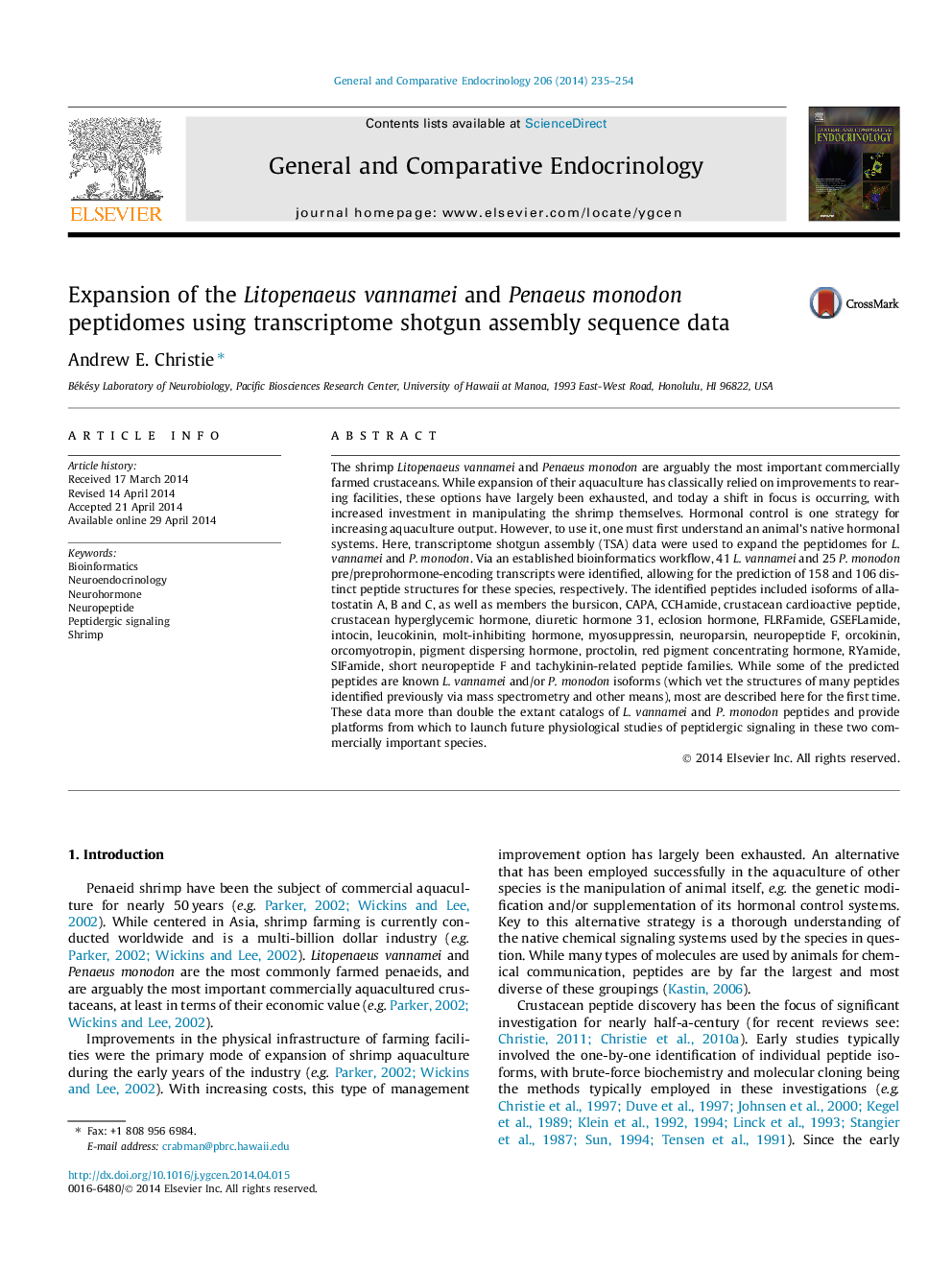| Article ID | Journal | Published Year | Pages | File Type |
|---|---|---|---|---|
| 2800114 | General and Comparative Endocrinology | 2014 | 20 Pages |
•Peptidomes for Litopenaeus vannamei and Penaeus monodon were deduced.•The structures of 158 L. vannamei and 106 P. monodon peptides were predicted.•The identified peptides include the first decapod isoforms of CCHamide and intocin.•The predicted peptides vet many mass spectral sequence assignments.•L. vannamei and P. monodon share a large number of peptides isoforms in common.
The shrimp Litopenaeus vannamei and Penaeus monodon are arguably the most important commercially farmed crustaceans. While expansion of their aquaculture has classically relied on improvements to rearing facilities, these options have largely been exhausted, and today a shift in focus is occurring, with increased investment in manipulating the shrimp themselves. Hormonal control is one strategy for increasing aquaculture output. However, to use it, one must first understand an animal’s native hormonal systems. Here, transcriptome shotgun assembly (TSA) data were used to expand the peptidomes for L. vannamei and P. monodon. Via an established bioinformatics workflow, 41 L. vannamei and 25 P. monodon pre/preprohormone-encoding transcripts were identified, allowing for the prediction of 158 and 106 distinct peptide structures for these species, respectively. The identified peptides included isoforms of allatostatin A, B and C, as well as members the bursicon, CAPA, CCHamide, crustacean cardioactive peptide, crustacean hyperglycemic hormone, diuretic hormone 31, eclosion hormone, FLRFamide, GSEFLamide, intocin, leucokinin, molt-inhibiting hormone, myosuppressin, neuroparsin, neuropeptide F, orcokinin, orcomyotropin, pigment dispersing hormone, proctolin, red pigment concentrating hormone, RYamide, SIFamide, short neuropeptide F and tachykinin-related peptide families. While some of the predicted peptides are known L. vannamei and/or P. monodon isoforms (which vet the structures of many peptides identified previously via mass spectrometry and other means), most are described here for the first time. These data more than double the extant catalogs of L. vannamei and P. monodon peptides and provide platforms from which to launch future physiological studies of peptidergic signaling in these two commercially important species.
